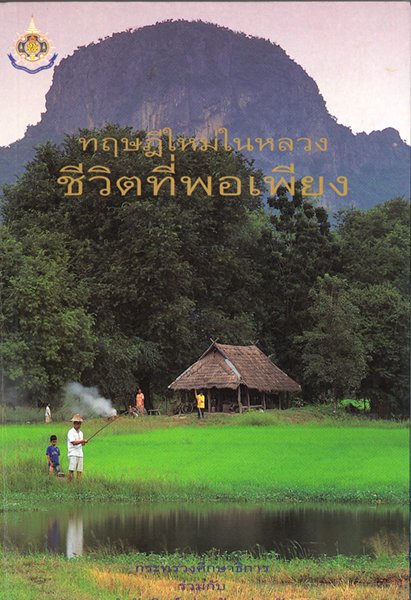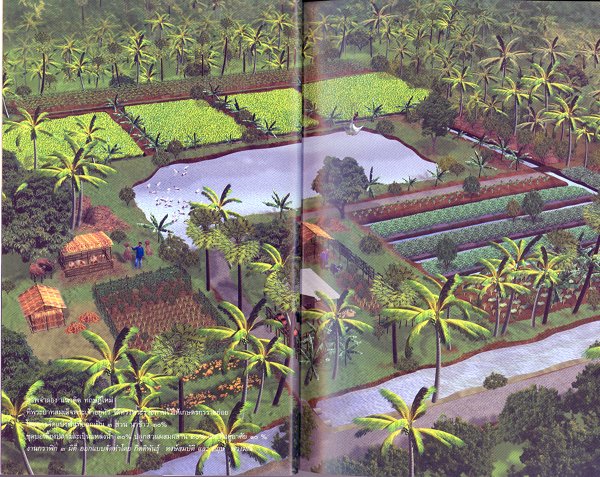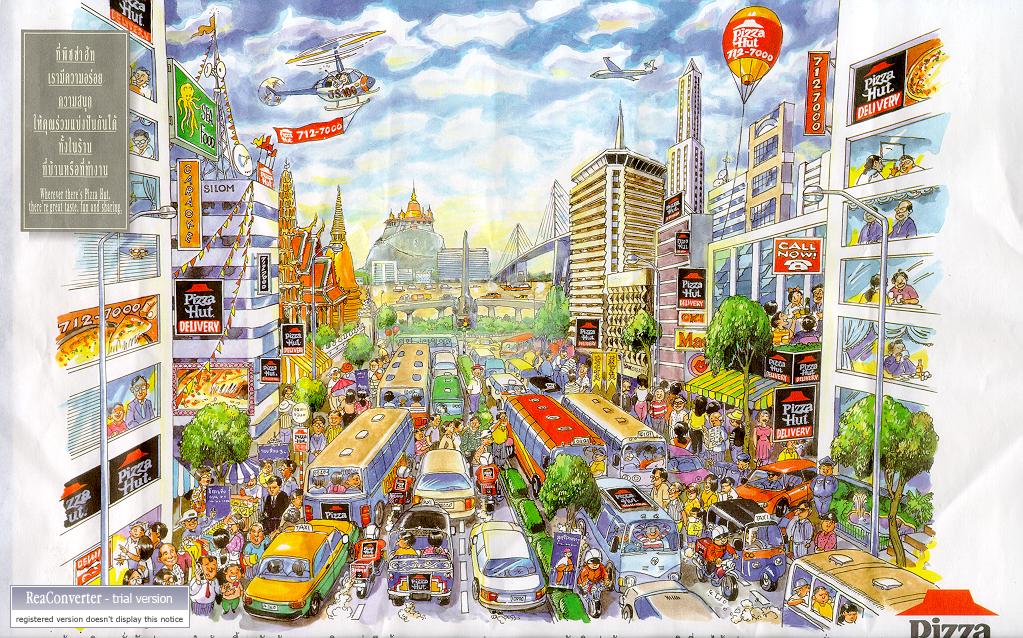Interesting to read in Nich’s post that there is some discussion of the sufficiency economy in Bangkok. To date, much of the discussion about the King’s theory has focussed on rural areas. Here are some images that give some indication of what the theory is about. The first is the cover of a book of collected case studies illustrating different aspects of sufficiency economy. The other a striking image from the book of sufficiency economy at a household level. The King’s theory proposes that farmers allocate 30% of their land to rice production, 30% to mixed gardening and orchards, 30% to fishponds and 10% to their living area.
There is much to discuss about the “sufficiency economy” approach. It certainly is not advocating a retreat to economic autarky (though the farmers in the pictures do look rather isolated). But it does appear to place a strong (and perhaps primary) emphasis on agricultural production for local use. How this meshes with local aspirations for improved standards of living, basic services and educational opportunity remains an open question. I recall the time I was watching television with a farmer in Chiang Rai and he apologised for the bad reception, explaining that this was “TV pho phiang” (sufficiency television). As rural areas increasingly become non-agricultural in orientation (and this has progressed much further than many would assume) sufficiency approaches to livelihood may be hard to sell, even with the widely recognised wisdom and insight of the King.But to return to sufficiency in the city. What might the sufficiency economy look like in Bangkok? Something like this perhaps?
 Facebook
Facebook  Twitter
Twitter  Soundcloud
Soundcloud  Youtube
Youtube  Rss
Rss 

